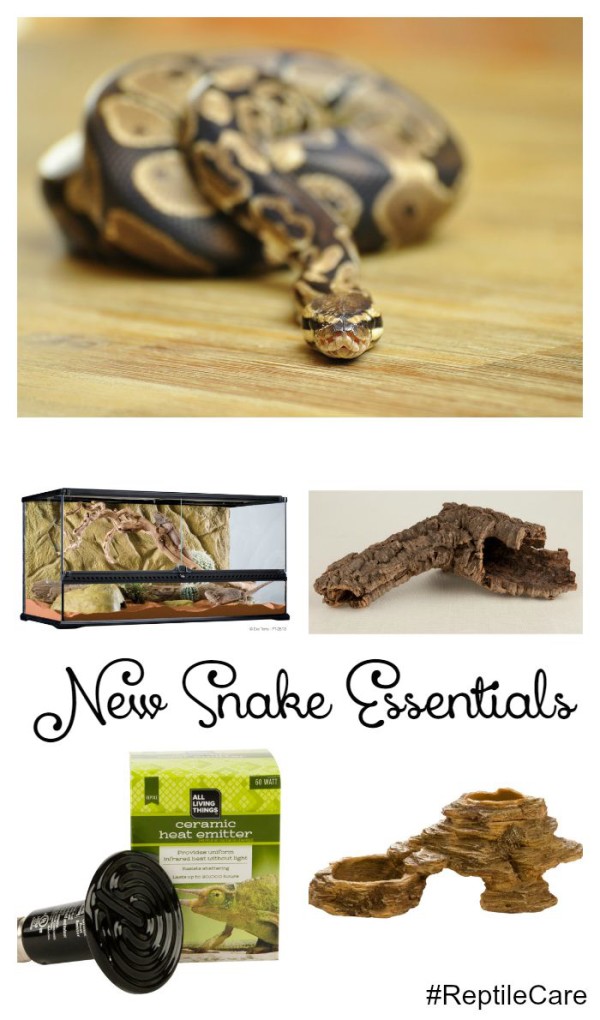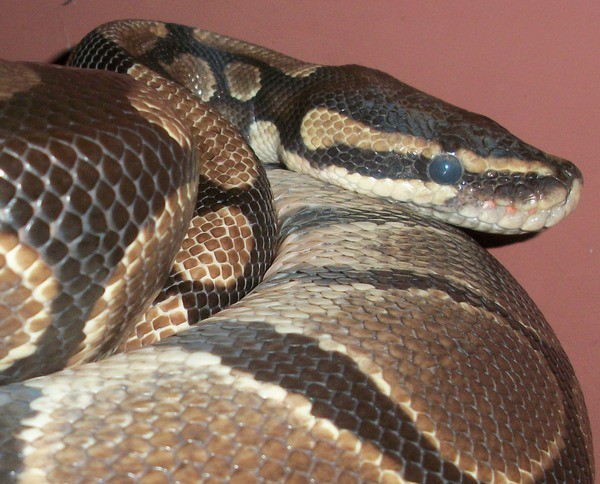This post is sponsored by petMD Reptile Center, and the BlogPaws Professional Pet Blogger Network. I am being compensated for helping spread the word about Reptile Ownership, but I only share information I feel is relevant to my readers. petMD® and PetSmart are not responsible for the content of this article.
Many moons ago, when I brought home my iguana Clyde, we didn’t know all that much about reptile care. In fact, we knew exactly what we were told at the pet store. With no internet back then and no access to experts, I went off that one conversation for the entire four years of Clyde’s life. Had I done more research, maybe he would have lived longer.
Sal, on the other hand, has kept his python Sess alive for over 20 years. He almost lost her once due to a faulty heat rock. After that, he made sure he knew exactly what he needed to survive. Snakes and iguanas are a world apart when it comes to certain things. One eats salads and the other dines on small furry things. They also have some similarities in care. You’ll find that in the reptile world quite often. You might expect to need one thing for the reptile of your choice, then find out they need a whole different environment. The only way to know what they need is through research. Today, I’m going to tell you a bit about what you need when you’re shopping for your new snake! I used my experiences, my boyfriend Sal and the petMD Reptile Care Center to help me with my research.
Shopping for Your New Python
Before you bring home a python- or any large snake for that matter- you’ll need a few important items to make her home comfortable. I think it’s best to have everything set up before you bring home your new friend, but I understand sometimes this doesn’t work out. Still, if you can, get everything ahead of time so you can welcome your snake home to a house that’s move-in ready.
Snake Care Shopping List:
- Terrarium: If you’re starting with a baby, you can get a 20 gallon. Just keep in mind that you’ll have to upgrade to at least a 40 gallon at some point. Sal has a 50 gallon and it’s quite roomy for Sess. You’ll want something with a lid and clips to hold it in place. Sal is very meticulous about making sure those clips are done right. If your snake gets out unsupervised, she could get hurt.
- Thermometers: You’ll need two, one for each side of the habitat. The basking side should be warming than the cooling side. Check out this article to learn the proper temperatures.
- Heat lamp: Very important. You want a heat lamp, not a rock. Rocks are better for other types of reptiles. Sal had a rock a long time ago and Sess ended up with burns so bad, Sal had to give her injections every day for weeks. The lamp should only heat about half the tank. Your snake needs a place to go cool down.
- A hiding spot: Sal’s used many different little hiding spots in the past for Sess, including a small wooden gift crate, an upside down water pan with a hole cut into it and even a shoe box. Just make sure to smooth any rough edges. You can also buy fake branches and hiding spots designed for reptiles.
- Substrate: Many people debate over the right kind of substrate. Sal uses newspapers because Sess had a skin conditioned caused by too much humidity dampening her substrate. In general, though, Aspen bedding is a good choice.
- Water Dish: No need to get fancy here. You can just get a wide plastic dish for a dollar somewhere. As long as it’s relatively large and shallow. Of course, you can get fancy with the cool ones that look like rock ponds if you want! Sess likes to bathe in her water after a good meal.
- Food: This is where I leave the room. I love Sess, but I can’t watch! She eats live rats. Since she’s an adult and about 5 feet, she’s eating the medium to large fellas. I used to name them before she ate them. That got too hard. Some snakes will eat frozen mice, although you have to thaw them first. Sess doesn’t. I think you have to start this when they are young if you want them to eat that way. Fortunately, Sess only eats once every couple of weeks.
This is just a basic list and may vary depending on what else you want to add. If you live in a dry area, you may need a way to add more humidity to the tank. Check out this fantastic article on Preparing for Your First Snake from petMD to learn more. You can find all of these supplies and more at the Reptile Purchase Center through petMD and PetSmart. Follow petMD on Facebook and Twitter to keep up with all their exciting news.
Have you ever brought home a new reptile? What items were you surprised to find out that you needed?






Oh man. No snake for me. I know a lot people like snakes, but I would not have a python. I can not feed mice to them. Do not have the guts. But there is a lot to know in making sure to take good care of a snake. Thanks for the information.
That’s a big NO NO for me. I have a phobia of snake so I’ll die if I see one at home. Hats off to you, you are brave!
I’m sure this is going to be a great resource for anyone who wants a snake for a pet. It will never be used in my house, but it’s an excellent resource, nonetheless. =D
Too many people get pets that just aren’t prepared for them. Thank you for sharing some tips so that new pet owners might be better informed.
EEK!! Hopefully this will never happen as I HATE snakes! But this is a great article for people thinking about it! Too many people purchase pets without doing research! There is a lot more to pets then just love and a home!
We just returned from the Caribbean and my grandkids had a blast feeding the Iguanas. It was so much fun to watch. This is great info for those wanting a reptile. Whenever someone is considering get a pet, they need to know the ins and outs on giving their pet the best care possible. Great stuff!
Great resource for snake owners. Snakes like most animals require a good owner, def. good read.
OK, I”m going to be honest – I don’t know that I’d ever allow a snake in my home but reading these tips did make me feel better about it. Having two boys, I’m sure they will ask for one at some point.
My kids were always interested in holding the snakes at the zoo. I think they would really enjoy having one as a pet. This is helpful!
We have never had any pet reptiles. I am surprised that they do not need more things then this.
This is a great piece for snake owners, or those looking to get one! It’s always good to have the details straight before you add a new member to the family.
This is an informative post, perfect for people who wants to consider owning a snake as pet. As for me, snakes, or reptiles in general is not an option but I am an advocate of responsible pet ownership
I’ve never brought a reptile home and I don’t think I’ll ever will. Snakes scare me. I do know some people back in my home country who have them as pets.
All good tips. I didn’t even think of a water dish, but duh to me, of course you would need one.
I love that you’re sharing this! I lost my first snake this past winter, it was so sad to wake up to. I eventually plan on getting another one and it’s always great to remind myself what to do and not to do.
We like snakes but not in our house. We have a ton of garden snakes in our yard, but the dogs see them as toys. No snakes allowed in our house!
Snakes make surprisingly great pets! My sister has a snake and it has quite the personality!
I don’t have a snake, but I was in someone’s home who did have one. I hope I never have to endure having a big snake in my own home, but seeing some ppl do it makes me think how nice they are to their son or husband or possibly little girl who wanted one!!
Move-in ready–great idea! My son is begging for a snake. Though I have pet-sat for several, we’ve never had one, ourselves, so I’ve never had to worry beyond the very basics. I’ll save this comprehensive list for later use. Thank you!